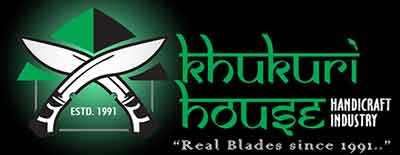At the Forge: The Birth of Khukuri
12th April, 2019
Kathmandu:
Khukuri is more than a weapon- form symbolizing the pride and valor of the Gurkhas in wars to multiple household uses to becoming an exquisite piece of craftsmanship, it has a diversity identity and uses. And it has been a popular item with tourists as a souvenir too.
'Mostly foreigners are fascinated by the weapon that was once wielded by the mighty Gurkhas, and wish to take a khukuri home as a souvenir', share Gopal Limbu, Manager of Khukuri House Handicraft Industry(KHHI) in Patan Industrial Area. 'They prefer taking a khukuri along with them while on trek or camping. Foreigners absolutely love khukuri and the history that comes along with it." he adds.
Along with selling khukuris, KHHI also allows people to make their own khukuri--and the khukuris are handmade rather than with the aide of advanced machines.
Richard Albert , a blacksmith and army veteran from England is one such enthusiast who is learning the craftsmanship at KHHI.
Currently in the country to conduct research on khukuri, Albert got interested in this weapon after meeting some "hardworking and audacious Gurkhas during my years in the army". He opines, "Khukuri certainly has an intimidating factor to it besides being a handy weapon and serves as a symbol of home to the Gurkhas abroad", and adds, " It is a beautiful weapon when made right."
So, how is it made right? We let the photos tell you the story of the khukuri that is forged and moulded by hand.
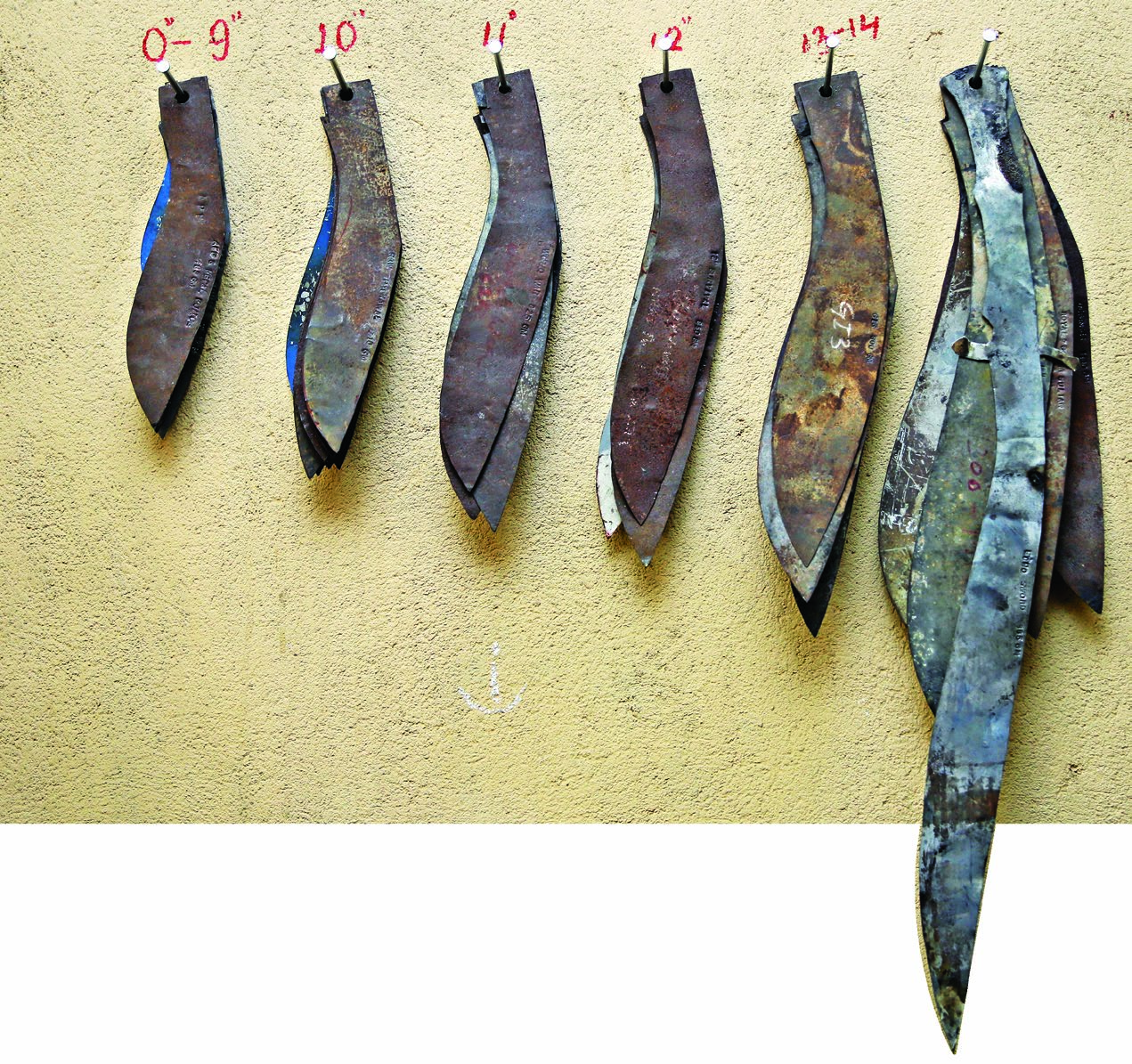
Tin templates of different sizes - they are used to get the measurement of the khukuri to be made. Then the metal (5160 high carbon steel) is cut out into required size.
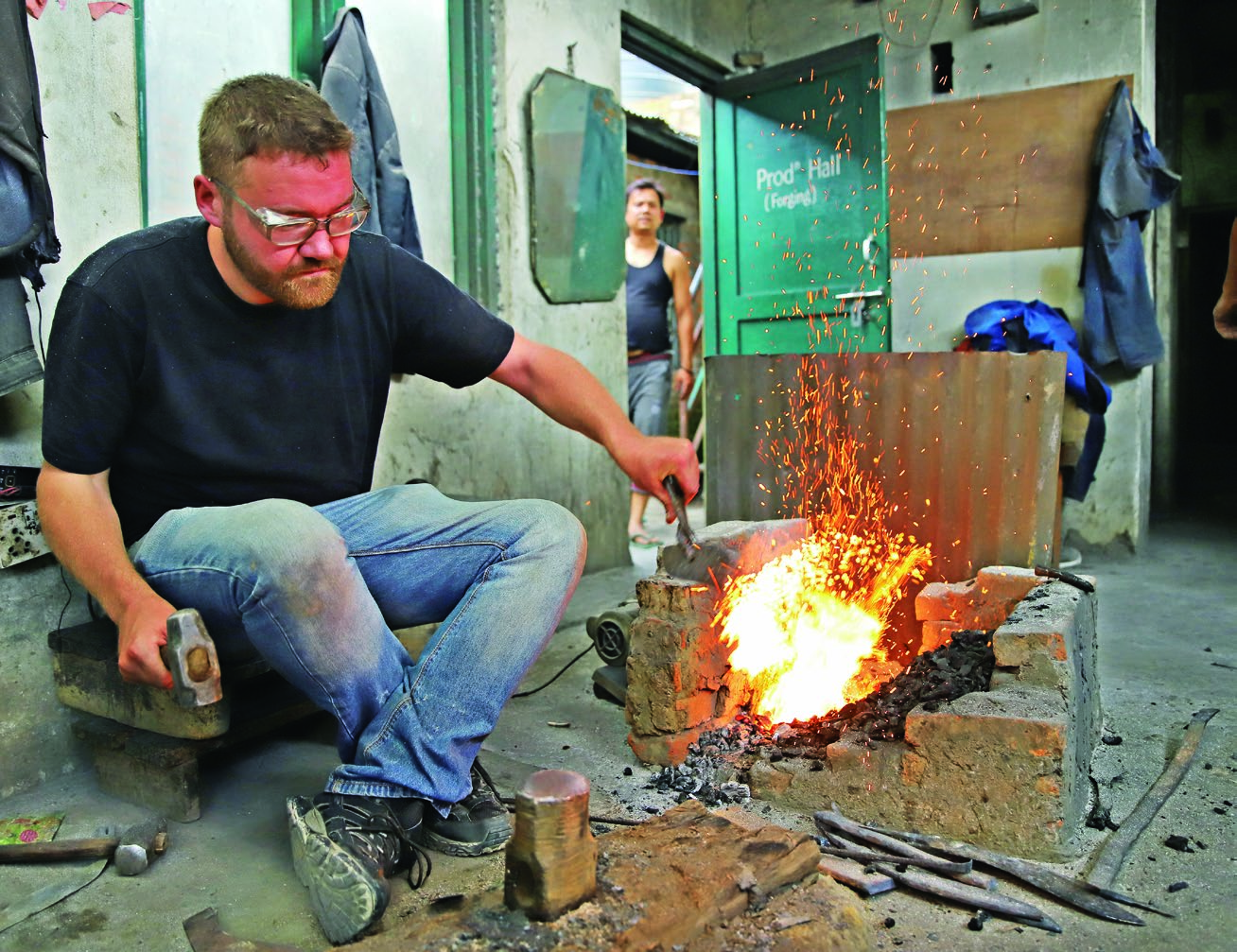
Albert heats the cut out of the metal in a fiery pit.
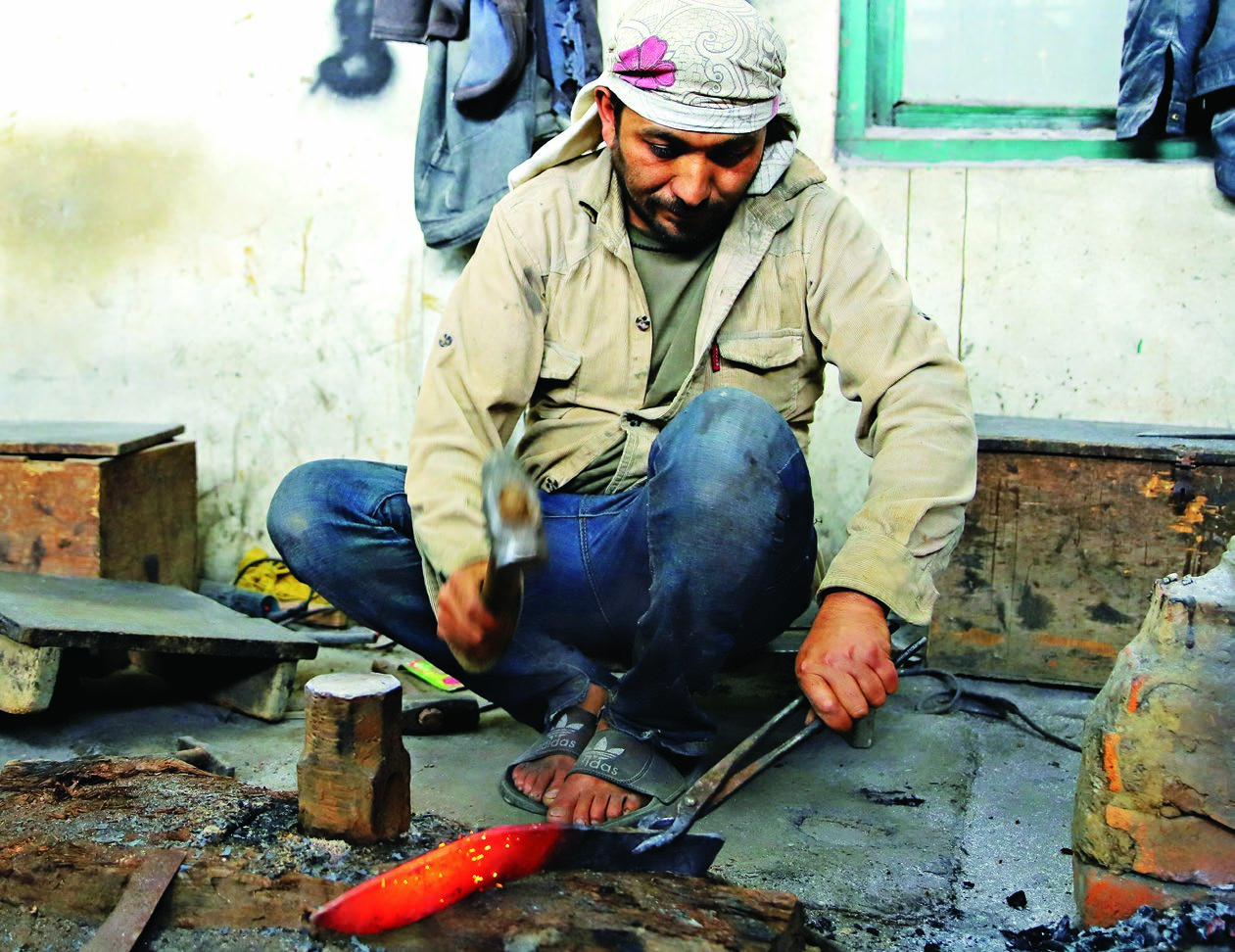
The red hot metal being moulded in the shape of a khukuri as a blacksmith hammers it to perfection.
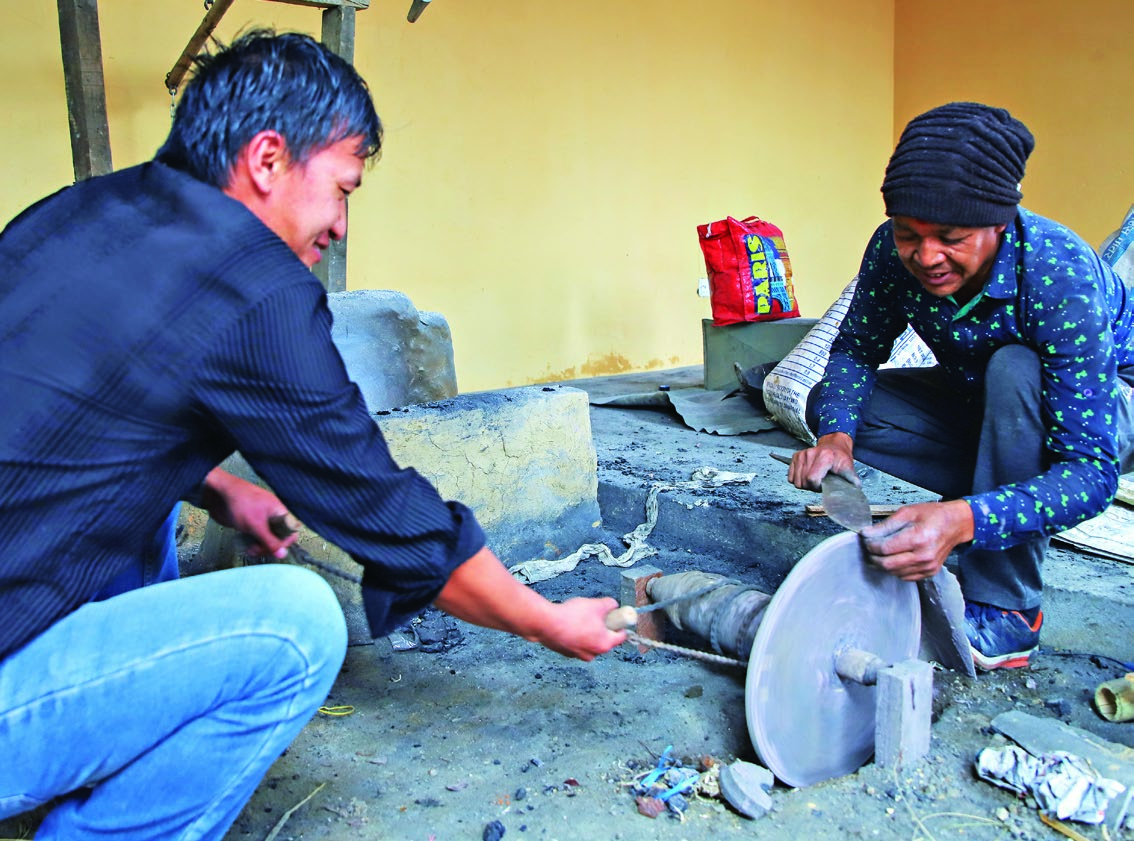
After being moulded into the desired shape, the blade needs to be sharpened. Here, Limbu helps Bir Bahadur Rashaili to operate san- a primitive tool to sharpen khukuri.
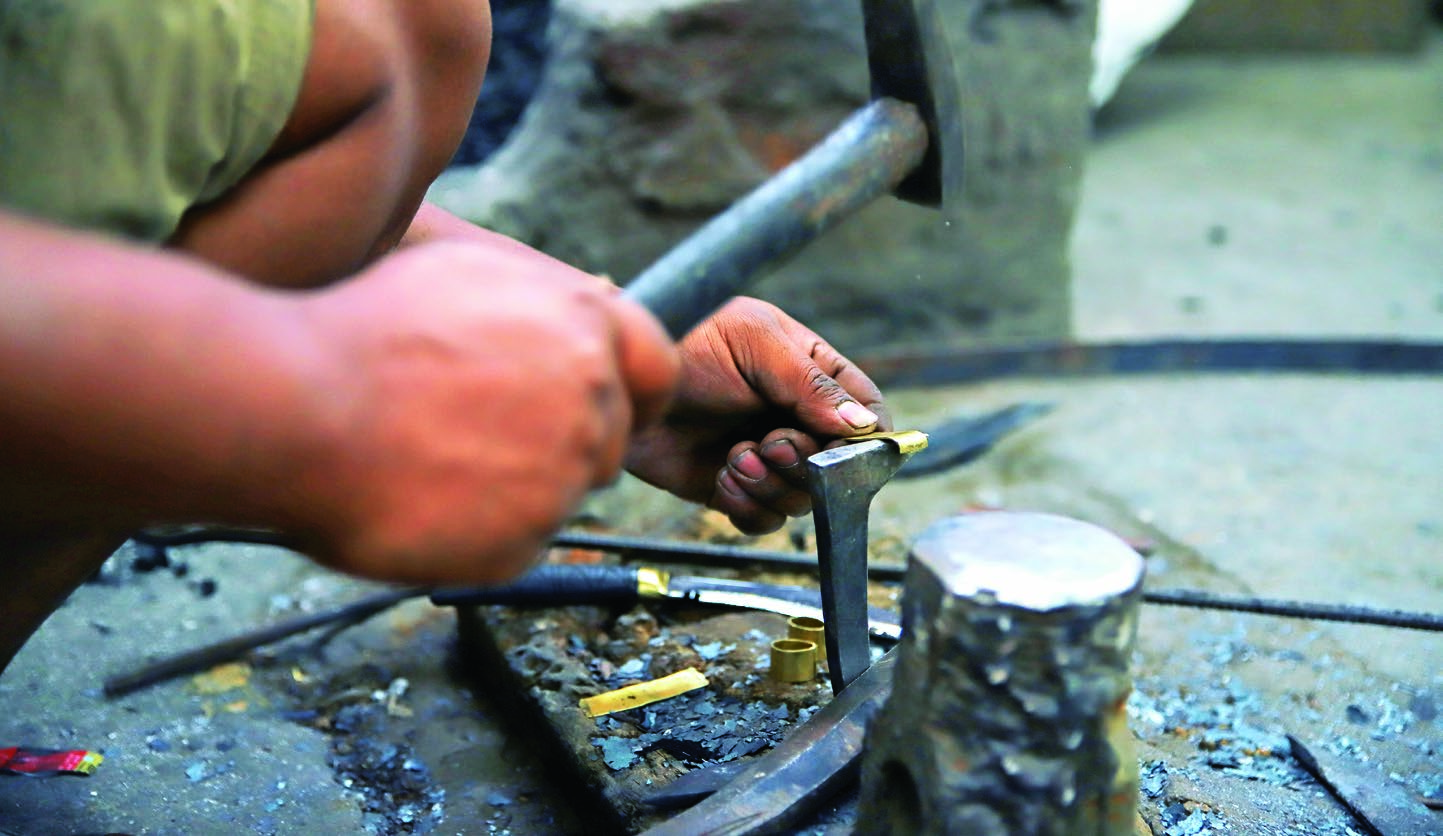
A worker forging a brass holder to perfectly fit inside the handle of a khukuri. When the blade is ready, some part of the handle is wedged inside a wooden handle with a brass holder.
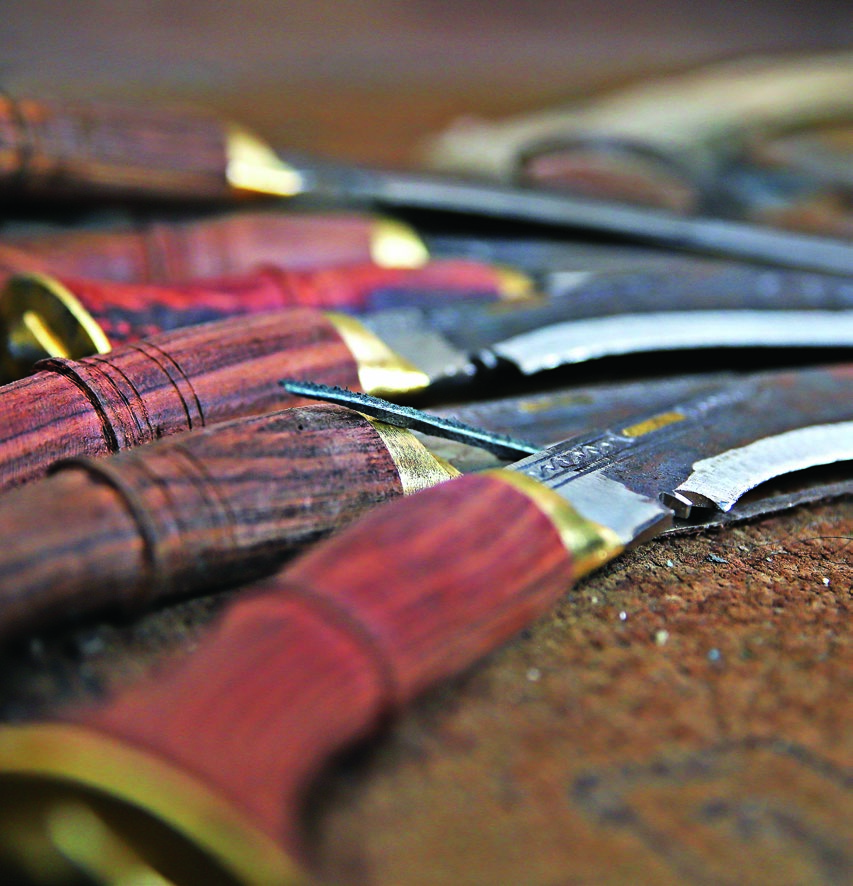
A collection of 'raw' khukuris - they undergo quality check (of weight, sharpness among others), before being sent for post-production.
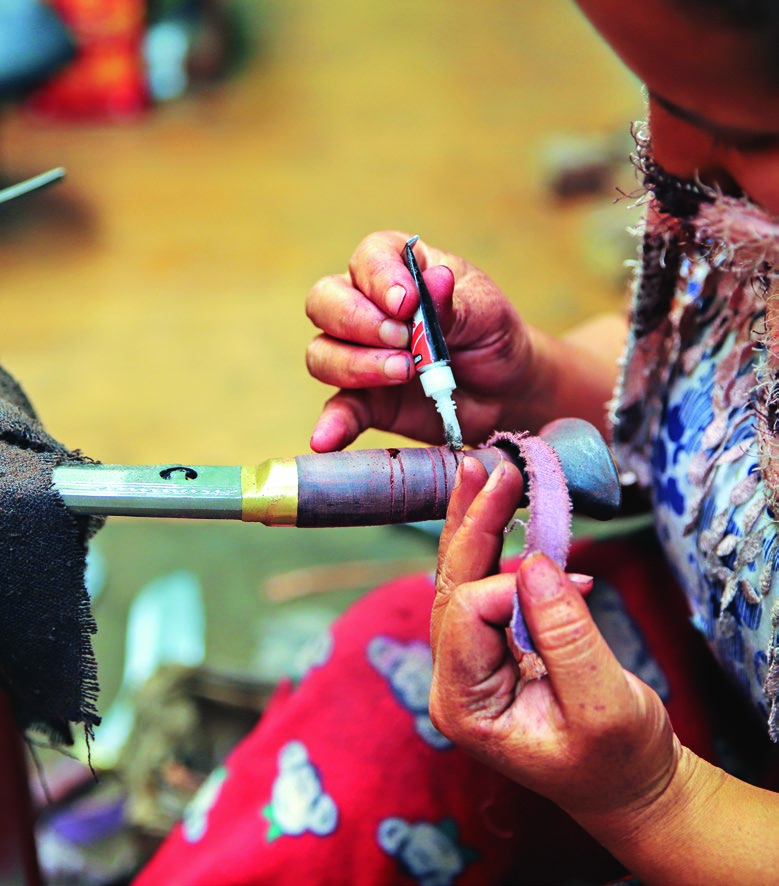
A worker gives the finishing touches to the wooden handle of a khukuri.
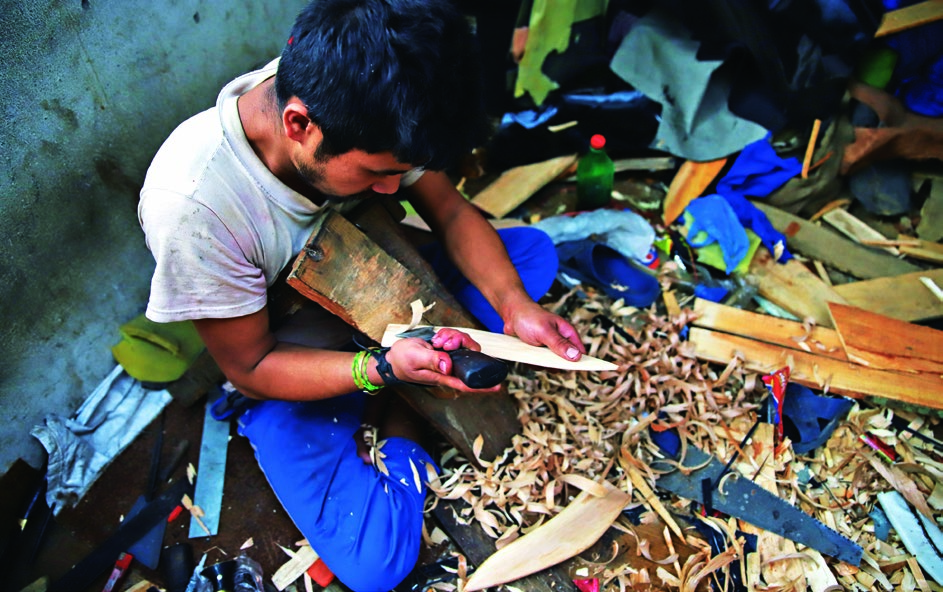
A young generation of woodworkers preparing a sheath for the prized khukuri.
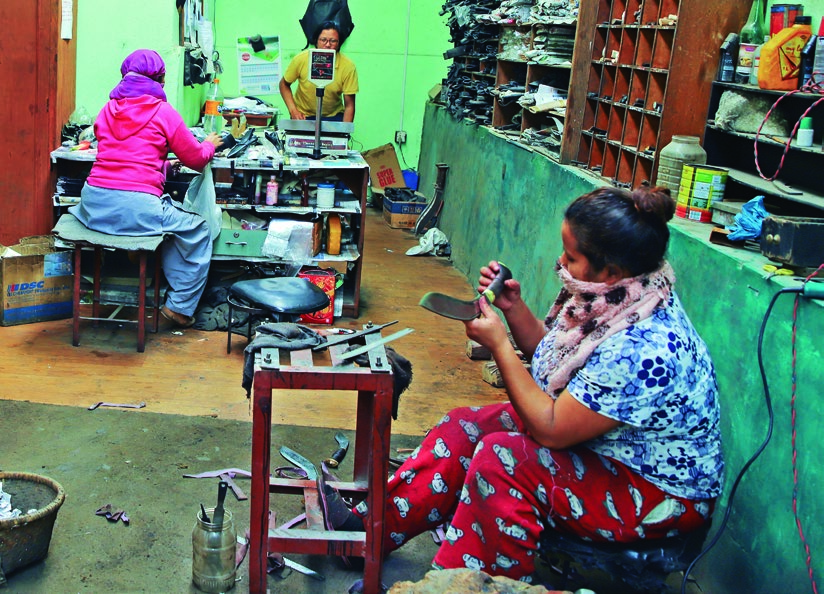
Workers conducting a thorough test of a new khukuri in the post-production phase - once everything is checked and passed, they are ready for sale.
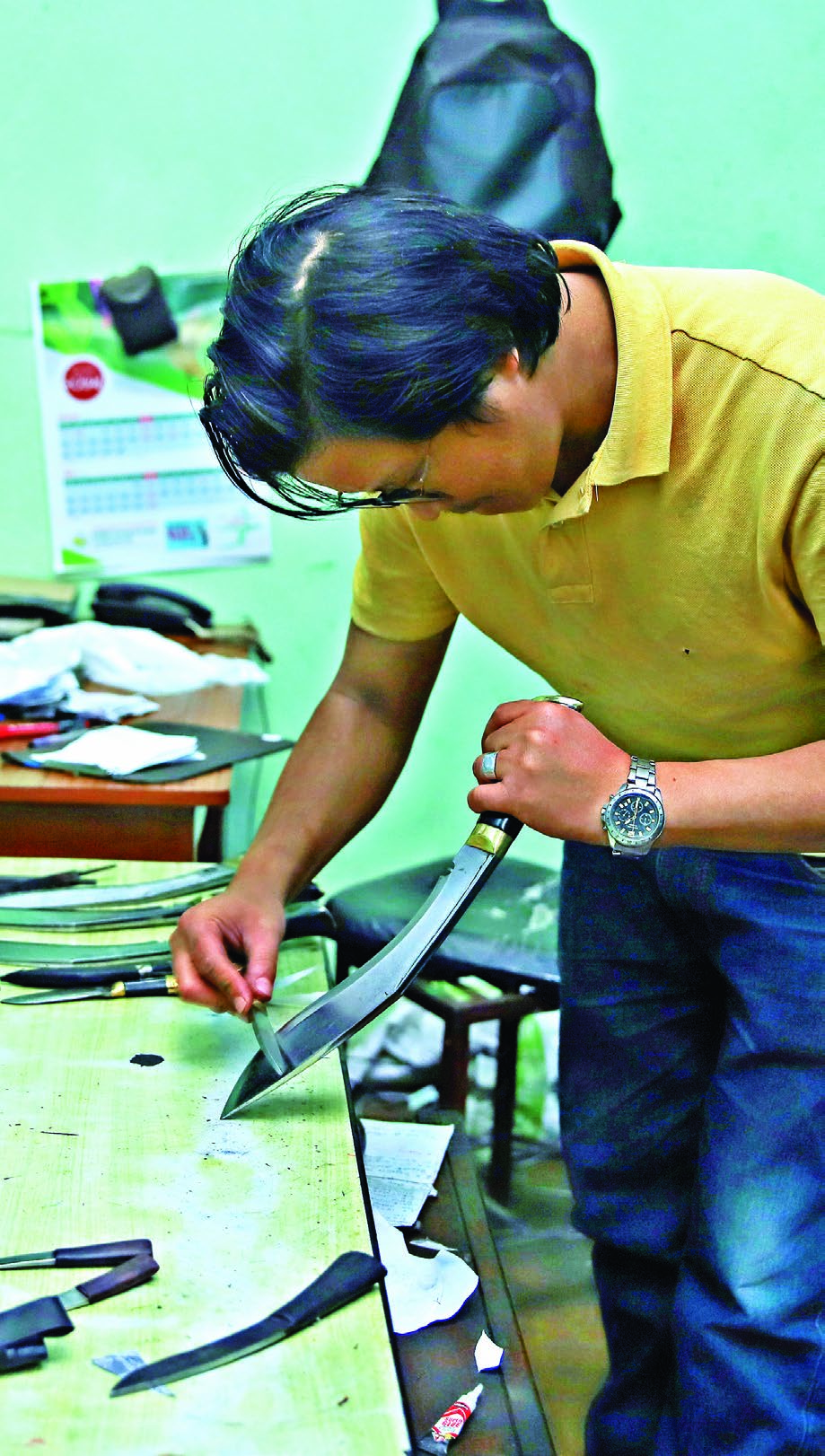
A khukuri being polished. in the post-production phase, raw khukuri is polished, and the blade is further sharpened.
As seen on The Himalayan Times // Thursday April 11, 2019 //Photos by: Nishant S Gurung /THT
Share